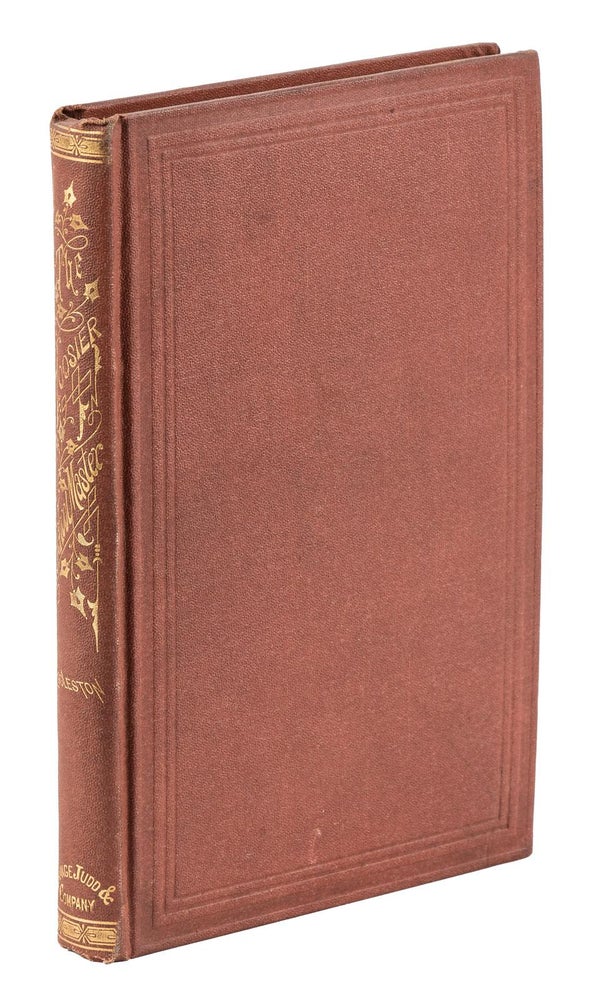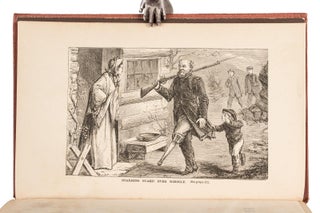THE HOOSIER SCHOOL-MASTER. A NOVEL. New York: Orange Judd and Company, [1871]. 12mo, pp. [1-5] 6 [7] 8 [9-10] 11-226 [227-228: blank], flyleaves at front and rear, twelve inserted plates with illustrations by Frank Beard, original terra-cotta cloth, front and rear panels ruled in blind, spine panel stamped in gold, brown coated endpapers. First edition. First state or printing with "was out," page 71, line 3. Eggleston's first novel, a story of Indiana life based on the experiences of his brother, George Cary Eggleston. "In the same remarkable year in which appeared [Bret Harte's] EAST AND WEST POEMS and [John Hay's] PIKE COUNTY BALLADS and so many other notable first volumes, there began in HEARTH AND HOME Edward Eggleston's study of early Indiana life, entitled THE HOOSIER SCHOOLMASTER. Crude as the novel is in its plot and hasty as it is in style and finish, it nevertheless must be numbered as the third leading influence upon the literature of the period ... The influence of Eggleston's work was enormous. He helped to create a new reading public, a public made up of those who, like himself, had had scruples against novel reading. He was an influence in the creating of a new and healthy realism in America. What Hay was to the new school of local color poets, Eggleston was to the new school of novelists. Harte was a romanticist; Eggleston was a realist. From Harte came the first conception of a new and powerful literature of the West. Eggleston was the directing hand that turned the current of this new literature into the channel of realism." - Pattee, A History of American Literature Since 1870, pp. 92; 98. "While the literature of the Atlantic Seaboard was still struggling in the last throes of sentimentalism, Harte in California and Eggleston in the Middle West were successfully developing a new type of fiction. The essential note in all of Eggleston's work was its fidelity to fact. He portrayed life exactly as he saw it. His influence on the subsequent trend of the American novel was profound." - Fullerton, Selective Bibliography of American Literature 1775-1900, pp. 92-3. Quinn faults the novel for its characters, "all types, not real people ... most of the characters are sheer caricatures," but notes that "his material, that of the village life of Indiana in his own boyhood, is described as he knew it ... The book has value as an historical document ..." (American Fiction, p. 342). BAL 5096 (noted printing 1). Wright (II) 843. A fine copy. (#164554).
Price: $500.00
No statement of printing.




